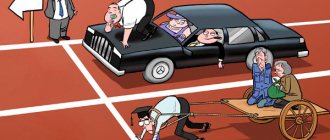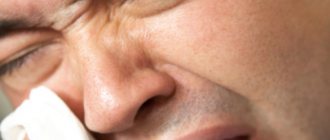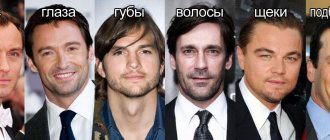Style shapes the image of you
In order to add charm to your style, you first need to realize that style begins with health. It's hard to overstate the importance of eating right, exercising, and taking care of yourself.
All this is especially important in youth. When you're young, you can sleep too little, eat poorly, neglect exercise, and get away with it all. Unfortunately, with age, the consequences will definitely make themselves felt.
But the opposite is also true. If you take care of yourself from an early age, you will always look younger than you really are.
However, this is not the only positive result of taking care of your health. In our health-obsessed society, there are countless opportunities to start your own business related to sports, nutrition or fitness. Take, for example, fitness guru Denise Austin or celebrity trainer Katie Kahler. One of the reasons these women have been so successful is because their very appearance shows how effective their diets and exercises are.
To be stylish, you don’t have to be beautiful and thin as a reed from birth. Style is not just the way you dress; This includes posture, facial expression, and gestures. Style is the embodiment of what you are and what you strive for.
Style can be mysterious and incomprehensible, but if you are smart enough to develop and maintain it, your efforts will definitely pay off.
"Dress code without rules"
At certain times in history, women wore corsets that were pulled tight, which could lead to fainting. We also had to lift our chests so that they almost touched our chins. And all this - to correspond to men's fantasies about what we should look like.
However, we have already paid all the bills and have earned the right to dress as we please, whether that means burning our bra or buying panties to match. The only rule regarding clothing today is: “No rules!” The next time you're shopping for clothes, here's what you need to keep in mind.
► Dress like who you want to be, not who you are. Everything, including the way you dress, should have a purpose. Since you must wear clothes, make sure they ensure your superiority. Clothes not only tell people who you are, but also reflect your aspirations.
► We all want to dress in a way that makes us feel natural and comfortable. However, if the clothes that give you the most comfort are not suitable for your profession, you might want to think twice.
► If you are most comfortable wearing clothes that show off your chest and highlight your long legs, and your profession allows it, be sure to choose a stylish version of such a suit.
However, if your professional goal is to become a member of the Supreme Court, then cleavage and miniskirts will not help you. You have to sacrifice something. Designer Ralph Lauren once remarked that in his view, style is expediency.
► Whether you look tastefully dressed or not depends on your goals. If you want to be a rock singer, don't dress like a nun—unless being deliberately asexual is a fashion statement. If your goal is to become the president of a conservative accounting firm, you will have to remove your eyebrow earring and hide your tattoos.
Clothing should serve you, should help you achieve your goals. Always ask yourself, “Does this style get me closer to where I want to be?” I've heard complaints about the inability to get promoted from women wearing cheap clothes and shoes and sporting hairstyles that can only be described as "explosion in a pasta factory."
Your appearance should match what you want to achieve. Actors know this well. During auditions, they dress in accordance with the role, so the casting staff does not have to think twice about what they will look like in a given role.
Help people see that you are qualified for the position you want to occupy. The closer you are to the desired position based on your appearance, the more likely you are to get it.
Socionics and other typologies
In issue 1/2002 of the Socionic Newspaper, the question “ Is sociotype related to appearance” was discussed?
". In this article we will also talk about the connection between appearance and types, but not with socionic ones, but with others, well known among psychiatrists - according to Sheldon’s typology. Whether there is a connection with socionics here – judge for yourself.
| Author: Irina Fomenko Specialty: psychologist. Lives and works in Kyiv. Author of the Psyterra website – psychology for everyone! Email address: This email address is being protected from spambots. You need JavaScript enabled to view it |
There is nothing inside, nothing comes from there, because everything that is inside is outside. (Goethe)
The inner world of a person always finds manifestation in his external appearance and behavioral characteristics. The connection between external and internal personality traits, how it manifests itself and whether it is always justified will be discussed below.
People have long tried to find connecting links between external features and psychology, and even fate, of a person. This is how palmistry (fortune telling by hand), physiognomy (determination of fate and character by the face), phrenology (fortune telling by the skull), podomancy (fortune telling by the lines of the foot) and other disciplines appeared; some left with their time, those who carried a rational grain within themselves remained.
In the first half of the twentieth century, a theory was proposed according to which those traits of human character from which all reactions to certain events arise are reflected in the human constitution. Everyone knows that a person, like a chicken, comes from an egg. At an early stage of its development, the human embryo is a three-layer tube; then its inner layer will turn into the stomach and internal organs, the middle layer into bones, blood vessels, muscles, and the outer layer into the skin and nervous system.
Typically, these three layers grow at the same rate, so that the average person's brain, muscles, and internal organs are equally developed. But sometimes one of the layers grows faster than the others and the child may end up with more guts than brains, or more brains than muscles. When this happens, the entire way of existence of the individual is often determined then mainly by the overgrown layer.
We can say that such people belong to the gastric type, scientifically, such people are called endomorphs or viscerotonics, the muscular type, science calls them mesomorphs or somatonics, and, finally, the brain type, from the scientific point of view their name is ectomorphs or cerebrotonics.
The classic viscertonic looks very much like a balloon that is about to burst, just as thick and cheerful. His skin is soft and smooth, and when he goes bald—he usually goes bald early—he first loses the hair on the top of his head. His round, wide face is often red. Sometimes it seems that the viscertonic person is about to have a heart attack or stroke, but there is no need to worry - he is in good health. He loves to absorb not only food, but also the affection and approval of others. He is good-natured, sociable, always in a good mood, loves those who love him. Such people make all sorts of politicians, and as a rule, they are successful with people. It is important to understand the nature of people of the gastric type, in a good mood they often joke about themselves, in response it would be more prudent to limit themselves to a polite smile, but not to laugh at him - later, when his mood changes, such a person may get angry with those who laughed.
Arnold Schwarzenegger is a classic representative of somatic people. Somatic is not thick, not long, rather wide. He usually looks rough and has well-developed muscles. He almost always has large arms and legs, chest and belly, firm and well shaped, with the chest being wider than the belly. The skin is thick, rough, but elastic, and tans quickly. When such a person goes bald, he starts from the forehead.
Somatic people are people of action, it is easier for them to do than to think, they like to spend a lot of energy. They have a lot of muscles and love to use them. They enjoy adventure, physical exercise, and fights, from which they love to emerge victorious. They are brave and unrestrained, they like to defeat people and circumstances. Understanding what brings joy to such people, one can understand why, in certain circumstances, they are unhappy.
Tall, or rather long, thin, young, because they age slowly, the man is a portrait of a classic cerebrotonic. He usually has thin, pale and dry skin. His muscles are weak and his bones are thin, his face is elongated and shaped like an egg. Usually a cerebrotonic person looks like an absent-minded professor, which, in essence, he is. Although such people are impulsive, they do not like to waste their energy and prefer not to fuss in vain. They love to think, observe and reason. They cannot stand difficulties and try to get away from them, and if troubles nevertheless overtake a person of the brain type, he becomes very upset. Friends do not understand him very well; cerebrotonic people are impulsive in their movements and feelings. Anyone who understands how easily they worry can help them adapt and survive in the aggressive world of somatic and viscertonic people.
When a person’s consciousness is engaged in a struggle with himself or with the world around him, the method of this struggle is partly determined by the type of personality. If any intractable problem arises, the viscertonic person will prefer to go to good company where he can drink and eat, when he would be better off doing business. The somatic person will try to do something, to take control of the situation, even if he does it unwisely and not very smartly. The cerebrotonic, in a similar case, will retire and begin to think about the situation, although it would be better to do something, or go to good company and forget about everything.
Since personality characteristics depend on the growth of the layers of the small egg from which a person developed, they are difficult to change, I think it is worth knowing about these three types, at least in order to guess what to expect from others, and be lenient about different types of human personality.
Of course, people belonging strictly to one type are extremely rare; much more often you can meet a person in whom the traits of one of the types only predominate; however, the system of “layers of the egg” is the best, today, in order to judge a person by his appearance (1).
But an opinion about the character and thoughts of a person, formed only on the basis of the outlines of his silhouette, will be incorrect if one does not take into account other features, both constant and changing, of his appearance. It is important to take into account the poses most often taken by a person, the shades of his smiles, and even the location of wrinkles on his face.
Posture and demeanor characterize a person no less than his constitution. A straight posture and a proudly raised head make it clear to others that their owner is a self-confident person who easily takes from life everything he needs, and standing in his way is more expensive for himself. Note that this impression, the first and most lasting, is formed by others before the person begins to speak, even if he later shows himself in a completely opposite direction, the first impression will still work for him. Why does the sight of just a straight back affect people this way and not otherwise? The answer is given by the following theory. In time immemorial, when man was already homo, but not yet sapiens, and, like all forest dwellers, was mastering the art of survival, I more than once noticed that in a dispute among themselves, some animals, in particular wolves, raise their heads high, thus exposing their necks , making the most vulnerable part of your body unprotected. He seemed to be saying to the enemy: “I’m not afraid of you, because I’m stronger, and you’re weak,” etc. and so on. At the same time, what is interesting is that the opponent did not attack his counterpart, but, showing the weakness of his nerves, left the territory. The man decided to try and use this technique in communicating with his fellow tribesmen. And I was surprised when I got a result even better than I expected. And even though millions of years have passed, still in the universal human consciousness, or rather in the subconscious, the image of even posture and tall stature is inextricably linked with the concept of authority.
If you look closely, the gait and rhythm of movements will tell something about the character and, especially, the train of thought at the moment. A rhythmic gait, as well as a smooth rhythm of movements, are characteristic of a person whose life is now in a bright spot. He is calm and peaceful, no problems bother him at this moment. If at this moment he is struck by some idea that he wants to immediately bring to life, his gait will immediately change, becoming tense and, as it were, rectilinear, his movements will become clearer and more coordinated. The upper part of the body, with such a gait, is tilted forward, which gives the body stability and makes a person more self-confident. This gait is usually characteristic of decisive, business people. Disturbances in rhythm, various hesitations, stumbles, interrupted halfway through the movement indicate that a person is not quite “in himself”, not quite “here”, some forces are resisting any impulse, hence a certain duality and lack of confidence, reliability, lack of internal freedom is something that meets internal resistance, for example, a student goes to school who has not learned an important lesson.
The mental characteristics of human development and his hand are interconnected. Several years ago, in the lower grades of some European countries, penmanship lessons were canceled; the motivation was universal computerization, in which it seems that you don’t even need to write, just press the buttons and everything is fine. But a few years later, teachers sounded the alarm about the sharp decline in the intellectual and mental abilities of their students, and penmanship lessons were reintroduced. Subsequently, studies were conducted to find out how strong the relationship between the brain and the palm is. Scientists have obtained results from which it follows that if we consider the eyes to be the mirror of the soul, then the palm can well be called a mirror of the brain and mental characteristics of a person. And, since every, even tiny, part of the body is controlled by the brain, then, as a result, our palm reflects our entire body (2). Based on the shape of the palm and the lines on it, people have long tried to predict their future, what awaits them in life, most often such predictions had no basis and therefore did not come true, but when they tried to determine their character and abilities by their hand, they often succeeded. In such predictions, serious palmists were helped by many years of observations and intuition. How can one not recall the episode from the film “The meeting place cannot be changed?” Remember when the owner of the apartment where members of the “Black Cat” gang were gathering after a hard “day of work” says: “You, Karpusha, look at his hands...” Indeed, Sharapov’s hands revealed him as a man of mental labor, an intellectual, and not a petty swindler, and this observation almost cost him failure. Previously, palmists, and now psychologists, looking for a reflection of a person’s inner world in his appearance, claim that thin, graceful hands, which usually indicate high spirituality and intelligence, as a rule, belong to people whose ancestors were not engaged in hard physical labor. Consequently, they had enough time for mental and spiritual development, which had a beneficial effect on their descendants. The same psychologists noticed that a large palm, in relation to the proportions of the whole body, belongs to a hardworking person, and the owner of a small palm is often lazy. If, after shaking someone’s hand, you clearly feel the firmness of your counterpart’s palm, then most likely you have met a tough, energetic partner who will not miss his way. And everything is the other way around with the owner of a soft, gentle palm.
However, you need to remember that the above are only general rules, and in real life there are too many exceptions, so first of all you should believe your own intuition, and only then some rules (3).
Recommended reading.
1.E. Bern "Know Thyself."
2. A. Stangl “Body language. Getting to know people in professional and everyday life.”
3. W. Sheldon “Psychology of constitutional differences.”
New articles:
- Pavel Tsypin Drawings by E. L. Tsypin The question of the dialectic of the human soul and body arose from the moment when the first human beliefs appeared. On the …
“>A person’s appearance as one of the keys to determining his sociotype
- Dmitry Lytov What has changed in socionics over the past 10 years? You can give many different examples: several dozen books on socionics have been published (up to...
“>Are sociotype and appearance related?
How to Make Clothes and Style Work for You
1. Style reconstruction is the first step to career reconstruction. When Katie Couric left NBC's "Today" show to become the anchor of the CBS Evening News, all eyes were on her—not just because of her credentials as a news anchor, but also because of her status as a style icon. In an August 2006 USA Today article by Olivia Barker, style gurus debated whether Couric could adapt a casual look to the evening news program. According to Stacy London, co-host of TLC's Take It Down Now, "Don't expect Couric to turn into a meek TV host." London noted that Couric's fans "will want her to maintain her sense of individuality and style because that's what people love about her," and added, "Remember, she was the first to show us how a woman could dress with real style and style." this is to have authority."
2. Style speaks for you before you say a word. Ariel Ford is a journalist. It was thanks to her that some top-rated authors became famous. According to her, what an author says when appearing on a television show will not affect the sales of his books. It all depends only on whether the audience likes it or not - this is closely related to the aesthetics of the appearance.
It is widely known that during a job interview, the decision as to whether the applicant meets the job requirements is made within the first 30 seconds. Many managers (whether they admit this fact or not) not only evaluate your qualifications during the interview, they also wonder whether this person is “suitable for this position.” Style speaks for you and about you even before you utter the first word.
The character of a person by appearance: nose, cheekbones, ears and chin
Nose
To determine character, pay attention to the nose. Stubborn people, leaders and strong personalities have straight noses. If you are ready to unconditionally accept the leadership of such a man, it makes sense for you to consider him as a partner. Eagle noses are popular with women, but their owners are cunning and often cruel.
These are sexy and attractive men, but quite distrustful in relationships. These are not easy partners. Snub-nosed men are emotional and vulnerable in nature; money does not stay with them because of their innocence and impulsiveness. In general, if you are ready for constant changes in your relationship, this is your man.
A sharp and thin nose reveals a romantic and subtle nature; this man will fill your relationship with tenderness, but he is unlikely to be able to solve any problem when it arises. The character of a man with a potato nose is that he is a cheerful fellow, the life of the party, a little frivolous and flighty. Upturned noses speak of temperamental partners who live with momentary desires, but a nose with flaring nostrils indicates an amorous and lively nature.
Cheekbones
The character of a person with high cheekbones means that he is power-hungry, is used to dictating his own terms in communication, and has a complex character. Low cheekbones, on the contrary, indicate a lack of will and courage. Such a partner will preserve the family until the last, and in most cases, in such a couple the leader is a woman. If the cheekbones are not high and not low, then you have before you a man who embodies willpower and strength of character and, at the same time, modesty and the ability to compromise. Dimples on the cheeks indicate good nature and the ability to rejoice; with such a man you will never be bored.
Ears
The shape of the ears can also tell a lot about a person's character. Powerful and even cruel men have large, fleshy ears. Pointed upwards are a sign of intelligence and prudence. The owner of tightly pressed ears is cold-blooded and cunning; perhaps the most ideal ones are ears close to a quadrangle; the owners of such ears are noble, kind and firm in their decisions. Men with long ears are stingy and envious, and protruding ears indicate simplicity and frivolity.
Chin
This part of the face attracts the same attention as the nose. Women like men with strong chins and this is absolutely justified. A well-defined chin really indicates willpower and the ability to achieve your goals. Men with a square chin have determination and a strong character. A protruding chin occurs in cunning, intelligent and sharp-tongued people. An expressionless chin indicates that the man is most likely weak-willed and you can twist ropes out of him.











